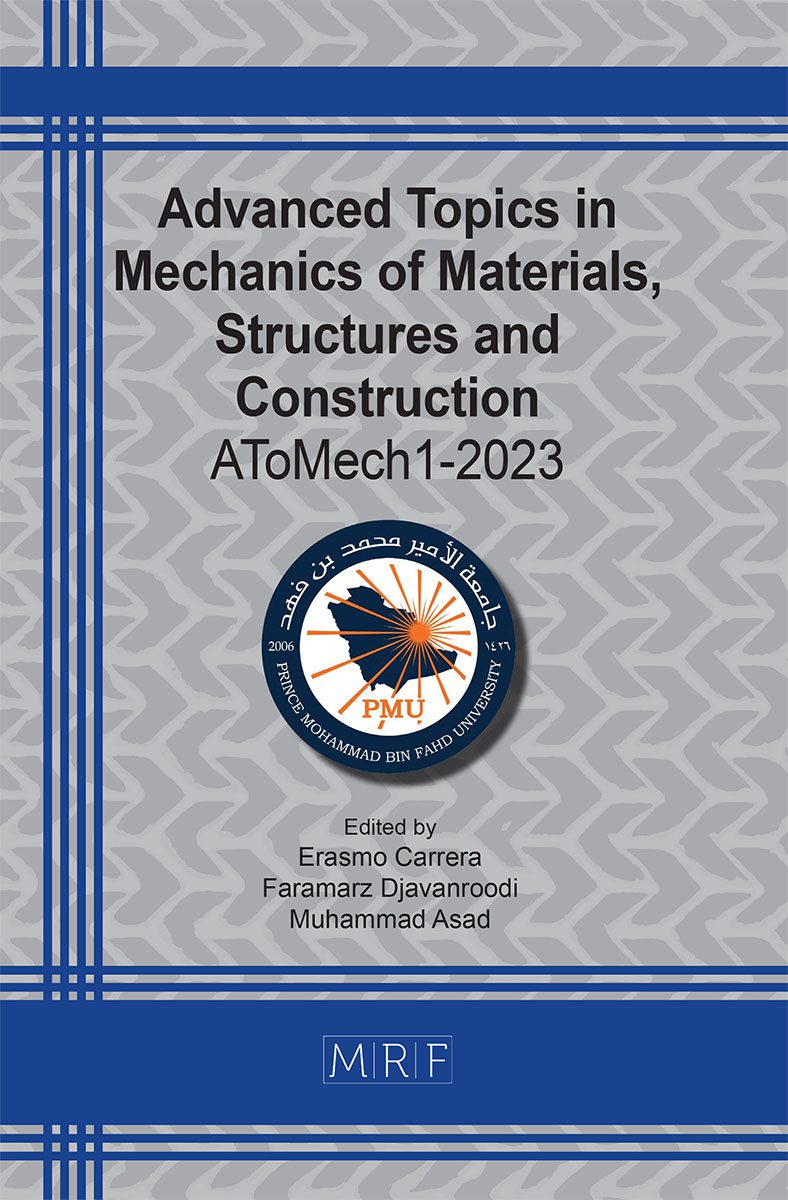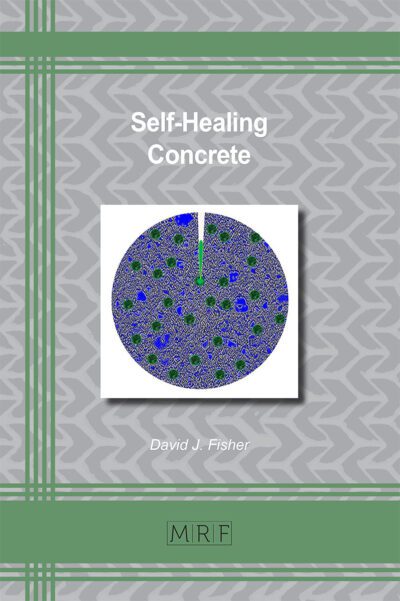Manufacturing strategy for additive manufacturing of a piping component for oil and gas application
Meshal Alsaiari, Mushtaq Khan, Faramarz Djavanroodi
download PDFAbstract. Additive manufacturing, or 3D printing, has been the most developing, desired manufacturing process in the manufacturing industry for the last three decades. Ease of application, design of freedom, and variety of materials application attracted all industries manufacturers to shift their dependency of the traditional manufacturing processes to acquire an innovative state-of-the-art solution at the most affordable cost. AM manufacturing provides parts with the optimum processing factors and the least material wastage. Strength and final dimensional accuracy are vital in AM parts creation. This paper will demonstrate the DfAM to fabricate a piping spacer for the oil and gas piping system. Also, it will shed light on the main elements that impact DfAM’s strategy. All related manufacturing parameters: including infill, printing orientation, and material selection analyzed, to acquire a robust part created using the FDM process to ensure the final product is safely utilized for the oil and gas industry application.
Keywords
Additive Manufacturing, DfAM, Polymers, FDM, HDPE
Published online 8/10/2023, 9 pages
Copyright © 2023 by the author(s)
Published under license by Materials Research Forum LLC., Millersville PA, USA
Citation: Meshal Alsaiari, Mushtaq Khan, Faramarz Djavanroodi, Manufacturing strategy for additive manufacturing of a piping component for oil and gas application, Materials Research Proceedings, Vol. 31, pp 475-483, 2023
DOI: https://doi.org/10.21741/9781644902592-49
The article was published as article 49 of the book Advanced Topics in Mechanics of Materials, Structures and Construction
![]() Content from this work may be used under the terms of the Creative Commons Attribution 3.0 license. Any further distribution of this work must maintain attribution to the author(s) and the title of the work, journal citation and DOI.
Content from this work may be used under the terms of the Creative Commons Attribution 3.0 license. Any further distribution of this work must maintain attribution to the author(s) and the title of the work, journal citation and DOI.
References
[1] F. A. Cruz Sanchez, H. Boudaoud, M. Camargo, and J. M. Pearce, “Plastic recycling in additive manufacturing: A systematic literature review and opportunities for the circular economy,” J. Clean. Prod., vol. 264, p. 121602, 2020. https://doi.org/10.1016/j.jclepro.2020.121602
[2] A. V. D. & R. M. Metkar, Reconstruction of Damaged Parts by Integration Reverse Engineering (RE) and Rapid Prototyping (RP). 2018.
[3] N. Yaragatti and A. Patnaik, “A review on additive manufacturing of polymers composites,” Mater. Today Proc., vol. 44, pp. 4150–4157, 2020. https://doi.org/10.1016/j.matpr.2020.10.490
[4] T. A. S. of M. E. ASME, “ASME B16.48 Line Blanks,” 2005.
[5] T. D. Ngo, A. Kashani, G. Imbalzano, K. T. Q. Nguyen, and D. Hui, “Additive manufacturing (3D printing): A review of materials, methods, applications and challenges,” Compos. Part B, vol. 143, no. 13 February 2018, pp. 172–196, 2018. https://doi.org/10.1016/j.compositesb.2018.02.012
[6] K. Rajan, M. Samykano, K. Kadirgama, W. S. W. Harun, and M. M. Rahman, Fused deposition modeling: process, materials, parameters, properties, and applications, vol. 120, no. 3–4. Springer London, 2022.
[7] Y. Yao, M. Li, M. Lackner, and L. Herfried, “A continuous fiber-reinforced additive manufacturing processing based on PET fiber and PLA,” Materials (Basel)., vol. 13, no. 14, 2020. https://doi.org/10.3390/ma13143044
[8] J. Yan, E. Demirci, A. Ganesan, and A. Gleadall, “Extrusion width critically affects fibre orientation in short fibre reinforced material extrusion additive manufacturing,” Addit. Manuf., vol. 49, no. October 2021, p. 102496, 2022. https://doi.org/10.1016/j.addma.2021.102496
[9] K. Chen, L. Yu, Y. Cui, M. Jia, and K. Pan, “Optimization of printing parameters of 3D-printed continuous glass fiber reinforced polylactic acid composites,” Thin-Walled Struct., vol. 164, no. November 2020, p. 107717, 2021. https://doi.org/10.1016/j.tws.2021.107717
[10] A. Borkar, A. Hendlmeier, Z. Simon, J. D. Randall, F. Stojcevski, and L. C. Henderson, “A comparison of mechanical properties of recycled high-density polyethylene/waste carbon fiber via injection molding and 3D printing,” Polym. Compos., vol. 43, no. 4, pp. 2408–2418, 2022. https://doi.org/10.1002/pc.26550
[11] C. Casavola, A. Cazzato, V. Moramarco, and G. Renna, “Mechanical behaviour of ABS-Fused Filament Fabrication compounds under impact tensile loadings,” Materials (Basel)., vol. 12, no. 8, 2019. https://doi.org/10.3390/ma12081295
[12] M. Algarni and S. Ghazali, “Comparative Study of the Sensitivity of PLA, ABS, PEEK, and PETG’s Mechanical Properties to FDM Printing Process Parameters,” Crystals, p. 21, 2021. https://doi.org/10.1016/b978-075065129-5/50007-6
[13] H. L. Tekinalp et al., “Highly oriented carbon fiber-polymer composites via additive manufacturing,” Compos. Sci. Technol., vol. 105, pp. 144–150, 2014. https://doi.org/10.1016/j.compscitech.2014.10.009
[14] C. G. Schirmeister, T. Hees, E. H. Licht, and R. Mülhaupt, “3D printing of high density polyethylene by fused filament fabrication,” Addit. Manuf., vol. 28, no. April, pp. 152–159, 2019. https://doi.org/10.1016/j.addma.2019.05.003
[15] M. Zhang, X. Tian, and D. Li, “Interfacial transcrystallization and mechanical performance of 3d-printed fully recyclable continuous fiber self-reinforced composites,” Polymers (Basel)., vol. 13, no. 18, 2021. https://doi.org/10.3390/polym13183176
[16] N. Lokesh, B. A. Praveena, J. Sudheer Reddy, V. K. Vasu, and S. Vijaykumar, “Evaluation on effect of printing process parameter through Taguchi approach on mechanical properties of 3D printed PLA specimens using FDM at constant printing temperature,” Mater. Today Proc., vol. 52, pp. 1288–1293, 2022. https://doi.org/10.1016/j.matpr.2021.11.054
[17] M. Mohammadizadeh, A. Gupta, and I. Fidan, “Mechanical benchmarking of additively manufactured continuous and short carbon fiber reinforced nylon,” J. Compos. Mater., vol. 55, no. 25, pp. 3629–3638, 2021. https://doi.org/10.1177/00219983211020070
[18] A. Wiberg, J. Persson, and J. Ölvander, “Design for additive manufacturing – a review of available design methods and software,” Rapid Prototyp. J., vol. 25, no. 6, pp. 1080–1094, 2019. https://doi.org/10.1108/RPJ-10-2018-0262
[19] Y. H. Kuo and C. C. Cheng, “Self-supporting structure design for additive manufacturing by using a logistic aggregate function,” Struct. Multidiscip. Optim., vol. 60, no. 3, pp. 1109–1121, 2019. https://doi.org/10.1007/s00158-019-02261-3
[20] H. I. Medellin-Castillo and J. Zaragoza-Siqueiros, “Design and Manufacturing Strategies for Fused Deposition Modelling in Additive Manufacturing: A Review,” Chinese J. Mech. Eng. (English Ed., vol. 32, no. 1, 2019. https://doi.org/10.1186/s10033-019-0368-0
[21] H. K. Dave and S. T. Patel, “Introduction to Fused Deposition Modeling Based 3D Printing Process,” 2021, pp. 1–21.
[22] T. Ravi, R. Ranganathan, S. P. Ramesh, and D. S. Dandotiya, “3D Printed Personalized Orthotic Inserts Using Photogrammetry and FDM Technology,” in Fused Deposition Modeling Based 3D Printing,Materials Forming, Machining and Tribology, 2021, pp. 349–361.
[23] E. G. Gordeev, A. S. Galushko, and V. P. Ananikov, “Improvement of quality of 3D printed objects by elimination of microscopic structural defects in fused deposition modeling,” PLoS One, vol. 13, no. 6, 2018. https://doi.org/10.1371/journal.pone.0198370
[24] L. Di Angelo, P. Di Stefano, and E. Guardiani, “Search for the optimal build direction in additive manufacturing technologies: A review,” J. Manuf. Mater. Process., vol. 4, no. 3, 2020. https://doi.org/10.3390/JMMP4030071
[25] M. Rismalia, S. C. Hidajat, I. G. R. Permana, B. Hadisujoto, M. Muslimin, and F. Triawan, “Infill pattern and density effects on the tensile properties of 3D printed PLA material,” J. Phys. Conf. Ser., vol. 1402, no. 4, 2019. https://doi.org/10.1088/1742-6596/1402/4/044041
[26] H. Gonabadi, A. Yadav, and S. J. Bull, “The effect of processing parameters on the mechanical characteristics of PLA produced by a 3D FFF printer,” Int. J. Adv. Manuf. Technol., vol. 111, no. 3–4, pp. 695–709, 2020. https://doi.org/10.1007/s00170-020-06138-4
[27] P. K. Penumakala, J. Santo, and A. Thomas, “A critical review on the fused deposition modeling of thermoplastic polymer composites,” Compos. Part B, vol. 201, no. July, p. 108336, 2020. https://doi.org/10.1016/j.compositesb.2020.108336














